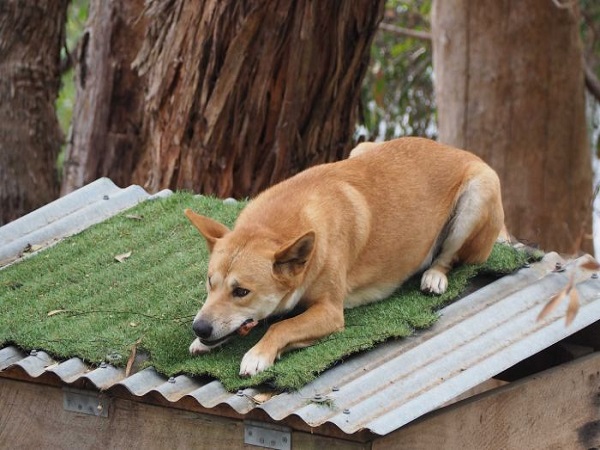
Now here’s some thoughts that will stir up discussion and differing viewpoints. But to us its a discussion we need to have.
Here is the full story from abc.net.au
Australia’s dingo fence, stretching more than 5,000 kilometres across the country, is the longest fence in the world. It’s designed to keep the wild dogs roaming on one side, and livestock safe on the other side. But some ecologists, including Flinders University’s Professor Corey Bradshaw, believe the fence is not the best defence, either for agriculture or the environment.
“I’m not going to say it would be great for everyone. There might be some who gain, maybe some who lose,” Professor Bradshaw said. “But on average I think Australia would be a lot better off economically and environmentally if dingoes were allowed to roam south of the fence.”
His argument is largely based on the growing understanding scientists have of the complex environmental role of apex predators, such as dingoes, which are at the top of their food chain.
“I look at the dingo as the last of the carnivore guild in Australia. It’s the last major carnivore we have,” Professor Bradshaw said. “As an ecologist, no matter what system I’ve looked at on the planet, a system that is healthy and resilient to change is one that has a very healthy predator population.”
Biologist Dr David Paton said that, at the moment, the predator population on much of mainland Australia remains unbalanced. There are plenty of middle-level predators — including introduced species, such as foxes and cats — but not much at the apex to keep them in check. It sounds counter-intuitive, but for mammals such as bilbies and numbats, a big hungry dingo may be a welcome friend.
“Dingoes don’t like cats and foxes — they out-compete or drive-off those species, so having dingoes present means you can lower fox and cat numbers,” Dr Paton said. “That actually gives a respite from the level of predation of smaller mammals in particular that have disappeared from much of the mainland Australian areas.”
At Yellowstone National Park in the United States, a program to return wolves to the habitat has been credited with causing some astonishing changes.
“By supressing the numbers of deer, they saw a massive change in the vegetation,” Professor Bradshaw said. “Then you had a reduction in erosion on all the rivers and lakes which changes the dynamics of the waterways… so beavers moved in, and then new fish species and birds of prey. It was this complete ecosystem shift.”
However both Professor Bradshaw and Dr Paton caution that the effects of re-introduced dingoes would not be as dramatic as Yellowstone’s wolves. The US park is in a pristine state, and only the wolves had been removed, whereas Australia’s pastoral lands have undergone extensive changes.
“The landscape is not like it was pre-European settlement,” Dr Paton said. “And that means the relationship between dingoes and the environment won’t be exactly like it used to be.”
Protecting sheep the biggest challenge. The more controversial topic, though, is how dismantling the dingo fence could benefit farmers. Professor Bradshaw said modelling showed that, for cattle farmers, there’s a clear economic gain — because cattle won’t have to compete with kangaroos.
“When you let dingoes in they reduce their [kangaroo] densities which reduces the grazing pressure, allows more grass to grow which is then eaten by the cattle and they have faster growth rates so you can sell them for more,” he said. “The gain is about 80 cents a hectare, even accounting for the inevitable losses of stock to dingoes.”
The ecologist conceded sheep are a different matter. They are far more vulnerable to dingoes than cattle, and no modelling has been done on the economics. But that problem could be solved, Professor Bradshaw argued, with the help of other breeds of dog to protect sheep from dingoes.
“I’d like to see a trial with sheep, dingoes and a guardian dog, such as the Italian Maremmas,” Professor Bradshaw said. “These dogs, like dingoes, will mark the territory and they bond with the flock. Once those boundaries of the territory are set, the dingoes will more or less respect them.”
Liberal MP Dan van Holst Pellekaan’s seat of Stuart in South Australia includes a large part of the zone protected by the fence. He has no argument with the claims being made for dingoes and native animals.
“I can easily accept dingoes would be very beneficial with regard to getting rid of some of our feral animals, foxes and cats,” Mr van Holst Pellekaan said. “I’d have no problems with a trial of sheep, dingoes and guardian dogs — as long as it was on the other side of the fence. But the idea that that would then translate into a benefit for the sheep and grazing industry, I don’t accept that.”
He makes the point that farming, like all areas of human endeavour, isn’t just about economics.
“Graziers care about their sheep and cattle and they will not be comfortable about putting them at risk of extra predation,” he said.
It seems that the debate over dingoes, humans and the environment leaves few people sitting on the fence.



 Protecting and managing habitat
Protecting and managing habitat